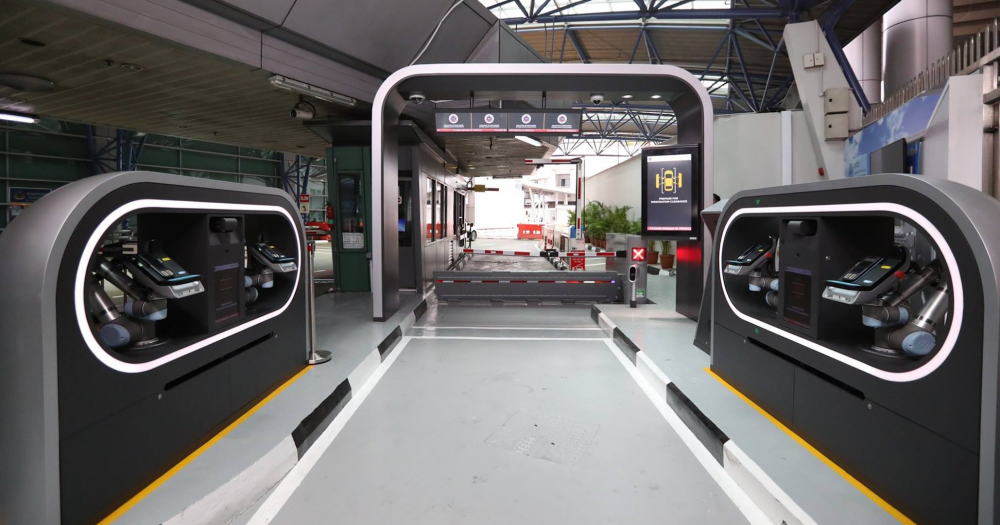Follow us on Telegram for the latest updates: https://t.me/mothershipsg
Those driving into Singapore via the Woodlands Checkpoint can try the new Automated Passenger In-Car Clearance System (APICS) that began on Jun. 21 and will end in October.
The system allows travellers to enter the country through a contactless immigration clearance by scanning their passport, and facial and iris biometrics at the checkpoint.
How does it work?
This CNA video breaks down how the machine works.
Since the program is still under trial, an Immigration and Checkpoints Authority (ICA) officer will be at the APICS to note the number of passengers in the car.
Once the gantry is opened, the car can drive forward and stop at a self-help kiosk.
The kiosk has an LCD touch display with a passport scanner, biometric scanner, fingerprint scanner and intercom.
The driver has to confirm the number of people in the car and the license plate number, then scan the passengers' passports.
The system will prompt the driver and passengers to simultaneously do their facial and iris biometrics scans to confirm their identities.
There are four points, one for each of the car's windows, for all passengers to scan their face and iris to complete their immigration clearance.
APICS will detect what type of car is at the kiosk and the height of the kiosk will adjust itself accordingly.
According to The Straits Times, it takes about five minutes to clear immigration.
According to ST, another feature of APICS is that it has an exhaust fan that removes fumes that may build up as passengers clear immigration.
There are also flexible traffic poles to guide drivers entering the clearance area.
Trial going well
According to CNA, the trial is only being conducted at the checkpoint on weekday nights and only cars with a maximum of four people, aged six and above will be selected to trial the new system.
Nonetheless, the system, developed by the Home Team Science and Technology Agency (HTX), is doing well.
Cheng Wee Kiang, director of HTX's Robotics, Automation and Unmanned Systems Centre of Expertise, said that the overall feedback received for the system has been positive, CNA reported.
Those who pass through the checks have been asked for their feedback which will allow HTX to further improve APICS.
The time taken for clearance is also recorded by ICA.
This is the second version of the APICS developed by HTX. The first one, trialled in December 2017, required passengers to scan their fingerprints on a biometric device via an extended robotic arm.
Top image of a prototype in 2017 via Lee Hsien Loong/FB.
If you like what you read, follow us on Facebook, Instagram, Twitter and Telegram to get the latest updates.
